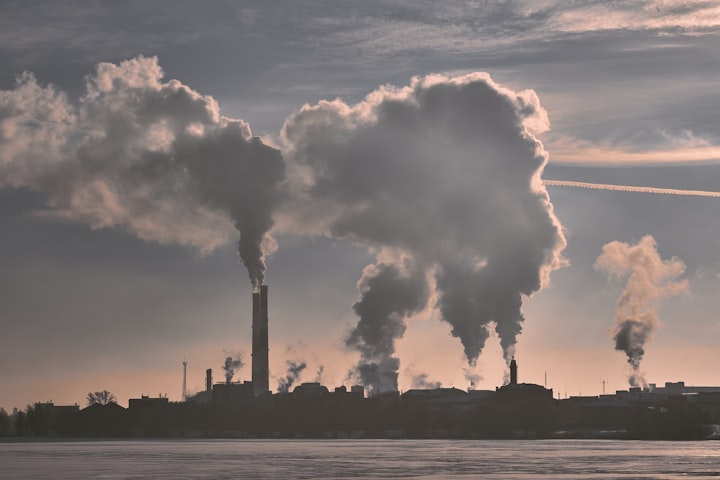
High household humidity can also help to "remove" toxins from furniture or cleaning products. The most common humidity problems occur when warm, humid air comes in contact with a cool place, such as a mirror, window, or wall, in a cool room.
Cool air can hold less water, so more water will combine to form water droplets on top. Moisture problems can also be caused by evaporation and congestion problems, including uneven indoor temperature, humidity, low humidity, low humidity in contact with cold indoor areas, and internal cooling (such as plumbing). .. It is known that all of this will affect a person's health, and the accompanying odor, moisture, and old and dry air will also make the house uncomfortable.
Apartments can have the same indoor air problems as single-family homes because many sources of pollution, such as interior building materials, furniture, and furniture, are the same. Indoor air pollution, which emits gases or particles into the air, is a major cause of indoor air quality problems. Adequate ventilation can increase indoor air pollution by not allowing enough outside air to pass through to reduce carbon emissions and keep indoor air pollution away from home. Due to the lack of adequate ventilation, indoor air pollutants can accumulate from indoor sources as they do not enter a wide area.
Therefore, indoor air quality may be more important than outdoor air quality due to exposure to pollution. As mentioned above, if there are strong sources of pollution inside your house, or during renovations, or when new furniture produces gas, the interior levels will be much higher than outside (assuming air quality levels are stable). Your proximity to external sources of air pollution (for example, if you live near a highway or in a city with high levels of traffic pollution) may affect the quality of indoor air.
Despite these dangers, there are no government standards or guidelines for internal pollution. Although air pollution commonly found in indoor air can have many negative effects, there is considerable uncertainty as to what concentration or exposure is needed to cause certain health problems.
However, according to the EPA, indoor air pollution levels are usually 2-5 times higher than outside levels, and in some cases, these levels may be more than 100 times higher than the same external pollution. However, in areas with the highest levels of PM (particles) in China, the concentration of internal air pollution (PM 2.5) is highly correlated and associated with external concentrations. Pollutants include high humidity, organic matter (VOC), combustible products, radon, pesticides, dust particles, germs, and germs.
Household cleaning products are another common cause of internal pollution. Studies have shown that when people cook in kitchens that do not have clean air, air can be harmful to breathing. Using wood-burning stoves or ovens for cooking food will cause wood smoke to pollute the air too much in the house. Natural gas and propane gas stoves release carbon monoxide, formaldehyde, and other pollutants into the air, which can be harmful to humans and pets.
About 17% of adults die of lung cancer due to carcinogen exposure caused by indoor air pollution caused by cooking with paraffin or solid fuels such as wood, coal, or coal. In low- and middle-income countries, one quarter or 25% of adults die from the chronic obstructive pulmonary disease (COPD) as a result of exposure to indoor air pollution. More than a million people die of heart disease each year, and about 11% of them may be found in indoor air pollution.
In recent years, more and more scientific evidence has emerged that indoor air and other structures are less polluted than outdoor air, even in large cities and industries.
According to the US Environmental Protection Agency, most of us spend 90% of our time indoors, and air pollution levels are five times higher than outside. Low indoor and outdoor air quality can make it difficult for your lungs to function properly and harm your health. Believe it or not, the atmosphere in your home can be worse than the outside air.
You probably know that breathing in the polluted air outside can be dangerous. But because we spend a lot of time indoors, especially in the cold, keeping the air at home, in the car, and at work as clean as possible is important to your health. Moisture is one of the most important and least-known sources of pollution as it affects human health and construction.
The particles in the air can change drastically over hours, indicating the growth of growing mold or outdoor winds pushing dirt through open windows. When the outside air reaches these levels, a warning is issued, warning that even healthy people are at risk of serious heart and lung damage. Indoor air pollution levels can be two to five times higher than outside, according to the Environmental Protection Agency (EPA), and closures have made this worse.
With the passing of the Clean Air Act in 1963 and the establishment of the Environmental Protection Agency in 1970, the formation of outdoor air chemicals began to be regulated at the state level, with pollution penalties. Six common pollutants covered by the Clean Air Act - soil ozone, particle, carbon monoxide, lead, sulfur dioxide (SO2), and nitrogen dioxide (NO2) - are covered by 74%, in accordance with the law. It was approved in 1970. However, other pollutants may be involved in recent illnesses, such as respiratory illness or cancer.
Before monitoring your radon-free contamination in your home, consult your local health department or experienced health care professional.






Comments
There are no comments for this story
Be the first to respond and start the conversation.